In the culinary world of 2024, woks have emerged as more than just a traditional cooking utensil; they represent a fusion of cultural cooking styles and innovative kitchen technology. These versatile pans, renowned for their deep, rounded basins and high walls, have transcended their origins in Asian cuisine to become a staple in a variety of cooking environments. With their unique design, woks enable a range of cooking techniques, from stir-frying and steaming to deep-frying and braising, making them indispensable in both professional kitchens and modern home cooking setups. The evolution of the wok market reflects a growing appreciation for culinary diversity and efficiency, showcasing the wok’s ability to adapt to various culinary needs while enhancing flavor and cooking efficiency. This trend underscores the wok’s enduring relevance and its role in shaping contemporary cooking practices.
Table of Contents
1. Wok varieties and their culinary roles
2. 2024 market insights on wok popularity
3. Criteria for choosing the right wok
4. Top wok models and their unique features
5. Concluding thoughts
Wok varieties and their culinary roles
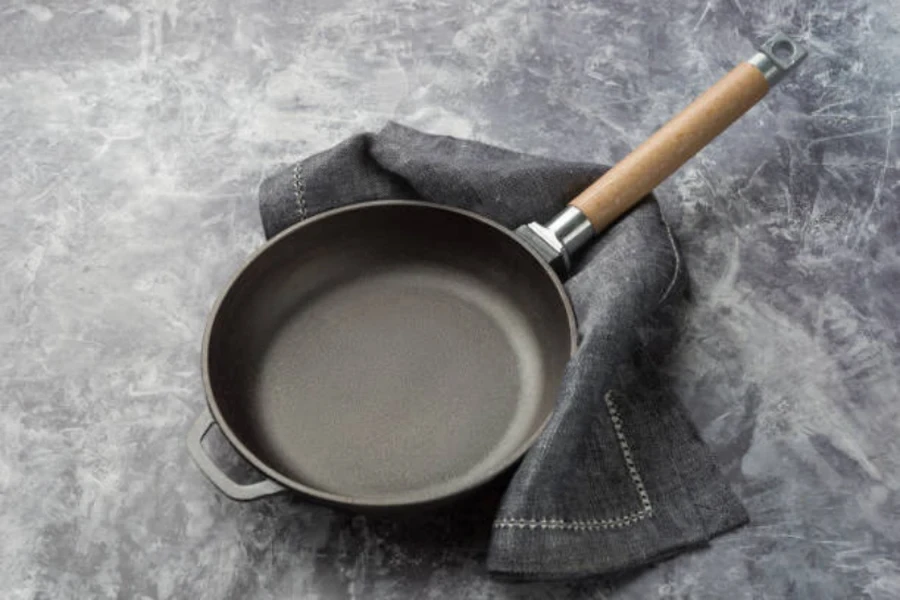
In the realm of professional cookware, woks stand out for their versatility and distinctive design. In 2024, the wok market is characterized by a variety of materials and designs, each catering to specific culinary techniques and preferences.
Carbon steel woks: the chef’s choice
Carbon steel woks are renowned for their superior heat reactivity, a crucial factor in professional cooking environments. Their ability to heat up rapidly and respond quickly to temperature changes makes them ideal for high-heat, fast-cooking techniques typical in Asian cuisines. Over time, these woks develop a non-stick patina, enhancing their cooking capabilities while reducing the need for excessive oil. This natural non-stick layer is particularly favored in professional kitchens for its durability and ease of maintenance.
Cast iron woks: retaining heat for perfection
The cast iron wok market, as detailed in recent research insights, continues to grow, reflecting its enduring popularity. Cast iron woks excel in heat retention, ensuring even cooking and perfect sear on ingredients. Their thick walls and heavy build allow for sustained high temperatures, making them ideal for techniques requiring prolonged heat, like braising and stewing. The market sees a variety of types, including round-bottom and frying pan styles, each serving different culinary needs. These woks are valued for their longevity, often becoming a mainstay in kitchens over the years.

Stainless steel woks: a contemporary twist
Stainless steel woks represent a modern approach to this traditional cookware. They offer a contemporary twist, combining durability with a sleek design. The stainless steel construction ensures even heat distribution and resists warping under high temperatures, making them a reliable choice for various cooking methods. Their easy-to-clean surface and compatibility with modern kitchen aesthetics add to their appeal in professional settings.
Design variations: Mandarin vs Cantonese styles
Design variations in woks, such as Mandarin and Cantonese styles, cater to different cooking preferences and techniques. Mandarin woks typically feature a single, long handle, facilitating easy movement and flipping of ingredients – a technique often used in stir-frying. In contrast, Cantonese woks have two short handles, allowing chefs to lift the wok off the heat source, useful in operations like steaming and deep-frying. These design differences reflect the diverse cooking traditions and techniques in Asian cuisine and have been adopted globally for their practicality and efficiency.
The wok market in 2024 presents a landscape of diverse options, each with its unique advantages. From the rapid heat changes of carbon steel to the enduring heat of cast iron and the modern versatility of stainless steel, these woks cater to a range of culinary techniques and preferences. The choice of material and design significantly impacts cooking outcomes, making the selection of the right wok a crucial decision in professional kitchens.
2024 market insights on wok popularity
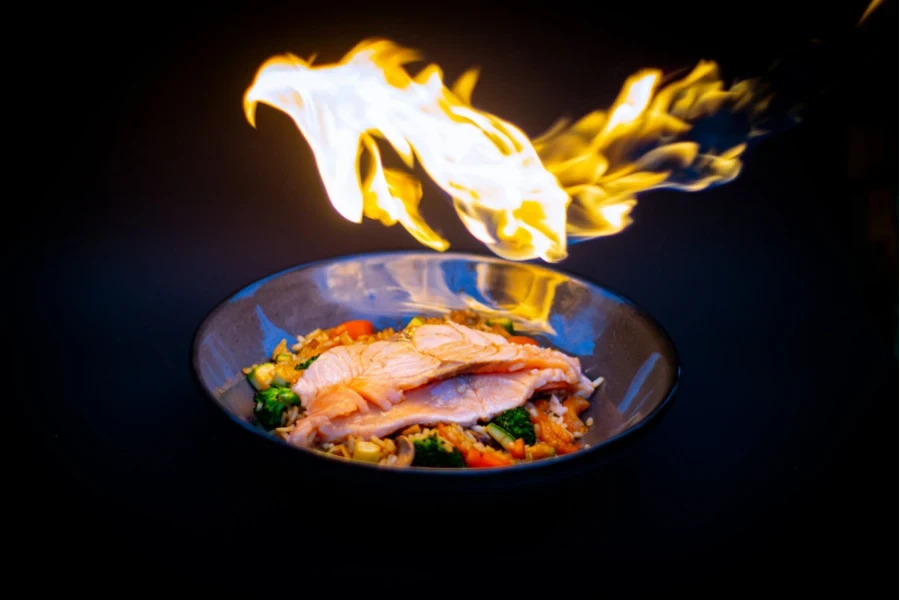
The landscape of wok usage and consumer preferences in 2024 is marked by a distinct blend of tradition and innovation. As culinary trends evolve, so does the popularity and technology of woks, reflecting a diverse consumer base’s needs and aspirations.
Trends and consumer preferences
Experts currently value the global cookware market, which includes woks, at USD 30.60 billion as of 2023. They project this market to experience growth at a compound annual growth rate (CAGR) of 6.2% from 2024 to 2030. This forecasted expansion suggests a robust and dynamic market environment, with the market size expected to reach approximately USD 49.85 billion by the end of 2030. This growth is driven by factors such as rising preferences for modular kitchens, improving living standards, and increasing awareness of different cooking techniques and utensils.
Current trends in wok usage reveal a heightened interest in versatile, efficient cookware that caters to a fast-paced lifestyle while preserving traditional cooking methods. The preference for sustainable and ethical practices, as evident from a survey highlighting that 73% of global consumers are willing to change their consumption habits to reduce environmental impact, extends to cookware choices. In this context, woks made from recycled materials or produced under fair trade conditions are increasingly sought after. The demand for woks is not just driven by functionality but also by the desire for authenticity in culinary experiences, as more consumers embrace diverse cuisines and cooking styles.
Advancements in wok technology
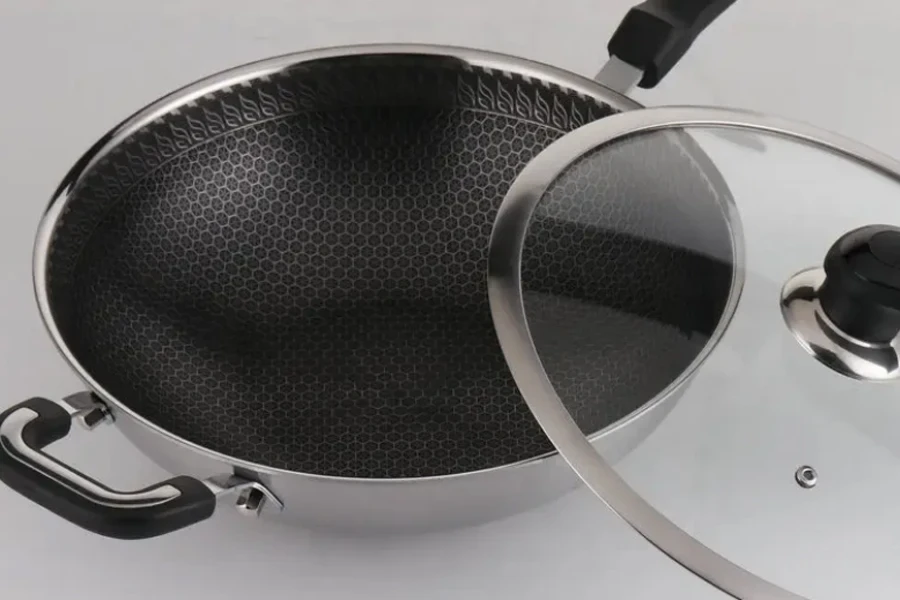
Innovations in wok materials and design are pivotal in shaping the 2024 market. These advancements are not only enhancing the cooking experience but also aligning with eco-friendly and health-conscious trends. For instance, the development of non-toxic, non-stick coatings has gained traction, offering safer and more efficient cooking surfaces. These technological advancements extend to ergonomic designs and heat-efficient structures, making woks more suitable for modern kitchens, including induction and electric stoves.
The integration of technology in cookware design, such as smart woks equipped with temperature control and cooking sensors, reflects the growing intersection of culinary art and technological convenience. These smart woks cater to a tech-savvy consumer base seeking precision and ease in their cooking endeavors. Moreover, the trend of personalization and customization is evident in the wok market, with consumers looking for cookware that aligns with their specific cooking preferences and kitchen aesthetics.
The 2024 wok market is a testament to the dynamic interplay of tradition, technology, and consumer values. It underscores the importance of adaptability and innovation in meeting the evolving needs of a diverse and informed consumer base. As the culinary world continues to expand its horizons, the wok remains a symbol of both heritage and progression in the global culinary narrative.
Criteria for choosing the right wok
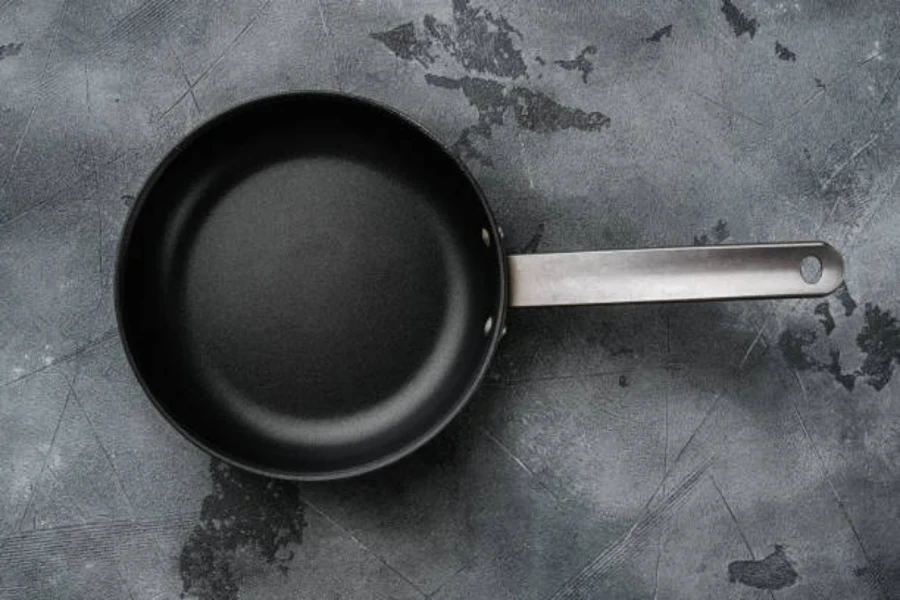
Selecting the right wok involves understanding various criteria that influence its performance in professional kitchens. Each aspect, from the material used to the compatibility with different heat sources, plays a critical role in how effectively a wok meets cooking requirements.
Material considerations
Material choice in woks significantly influences their cooking performance. Carbon steel, popular for its quick heat conduction, transfers heat rapidly and evenly. This material’s affordability, coupled with its strength and lightweight nature, makes it a favorite among chefs. However, the need for seasoning to prevent food sticking and to eliminate metallic tastes can be a drawback.
Cast iron, traditionally used in Chinese woks, provides uniform heat retention and distribution, crucial for even cooking. While imparting great flavor to the food, these woks tend to be heavier and thicker in the West, affecting their heat adjustment response time. The seasoning requirement for cast iron also adds to the maintenance process.
On the other hand, non-stick woks, often made from aluminum or stainless steel with PFA and Teflon coatings, offer ease of cleaning and require less oil. Their major disadvantage lies in their inability to withstand very high temperatures, limiting their suitability for traditional high-heat cooking methods like stir-frying.
Heat distribution
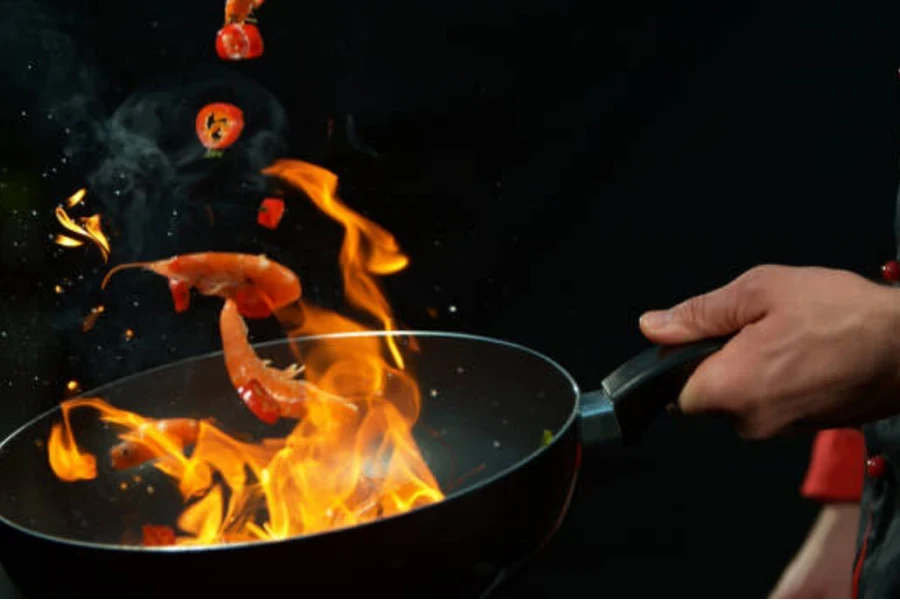
The heat distribution properties of a wok are predominantly determined by its material. Carbon steel woks excel in evenly distributing heat due to their superior thermal conductivity. This results in an even cooking surface, ideal for stir-frying where consistent high temperatures are essential for achieving the desired wok hei – the characteristic smoky flavor of Chinese stir-fry.
Cast iron woks, although slow to heat up, maintain a steady temperature once hot. This makes them suitable for cooking methods that require sustained, even heat, such as slow simmering. However, their heat retention can be a double-edged sword, as they also take a long time to cool down, which might not be ideal for quick cooking adjustments.
Non-stick woks typically exhibit uneven heat distribution, impacting the cooking quality of dishes that require high and consistent heat. The inability to reach the high temperatures needed for authentic stir-frying can result in a less desirable culinary outcome compared to carbon steel or cast iron woks.
Choosing the right wok material hinges on understanding these intricate differences in heat distribution and performance. Carbon steel woks offer a balance of quick heat conduction and even heat distribution, making them ideal for high-heat cooking techniques. Cast iron woks, while excellent for uniform heat retention, require more maintenance and are heavier. Non-stick woks, although user-friendly and easy to clean, may not be suitable for traditional high-heat cooking methods due to uneven heat distribution and temperature limitations.
Size and weight balance
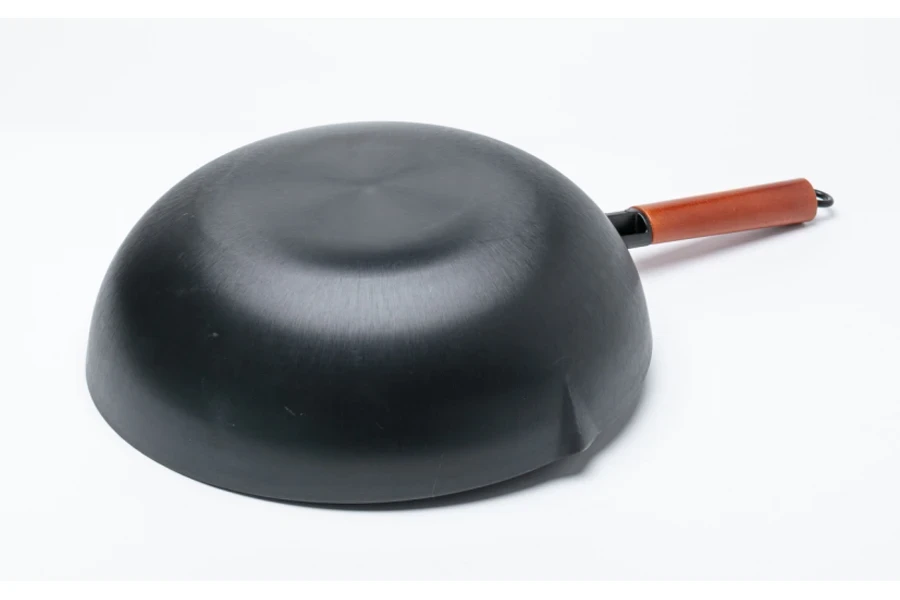
The size and weight of a wok are crucial factors that affect its usability for different cooking needs. Woks come in various sizes, typically ranging from 12 inches to 18 inches in diameter. A 12-inch wok is perfect for individual or small portion cooking, ideal for single-serving stir-fries or sautés. A 14-inch wok is more versatile, suitable for cooking for 2 to 4 people and fits most home kitchens. For larger gatherings or family meals, a 16-inch wok is ideal, accommodating substantial quantities for stir-frying and deep-frying. Woks larger than 18 inches are typically used in commercial settings.
The weight of the wok is equally important, as it influences the ease of handling during cooking. Lighter woks, such as those made from carbon steel, are easier to maneuver, especially when tossing and flipping ingredients. Heavier woks, like cast iron, provide stable and even heat but can be challenging to handle, especially for quick cooking techniques. The balance between size and weight affects the overall cooking experience, from the ability to move the wok on the burner to the ease of flipping and stirring ingredients.
Compatibility with heat sources

Wok compatibility with various stovetops and heat sources is a key consideration. Traditional round-bottomed woks are best suited for gas stoves where the flame can evenly heat the wok’s curved bottom. These woks concentrate heat at the bottom, allowing the sides of the wok to be used for cooler cooking zones, a crucial aspect of stir-frying.
For electric or induction stovetops, flat-bottomed woks are preferable as they can make full contact with the heating element, ensuring even heat distribution. The flat base provides stability and maximizes the cooking surface in contact with the heat source. However, flat-bottomed woks may not heat as evenly as round-bottomed ones on gas stoves due to the different heat distribution patterns.
Understanding these nuances in size, weight, and heat source compatibility is essential when selecting a wok. It ensures that the wok not only fits the kitchen’s cooking environment but also meets the specific culinary techniques and preferences of the cook. Whether it’s for quick, high-heat stir-fries or slow, evenly cooked dishes, the right wok can significantly enhance the cooking experience and outcomes.
Top wok models and their unique features
The year 2024 sees an array of exceptional wok models, each boasting unique features tailored to various cooking styles and preferences. From the rapid heat conduction of carbon steel to the even heat retention of cast iron and the modern convenience of stainless steel, these top wok models stand out for their innovative designs and superior functionality.
Leading carbon steel models
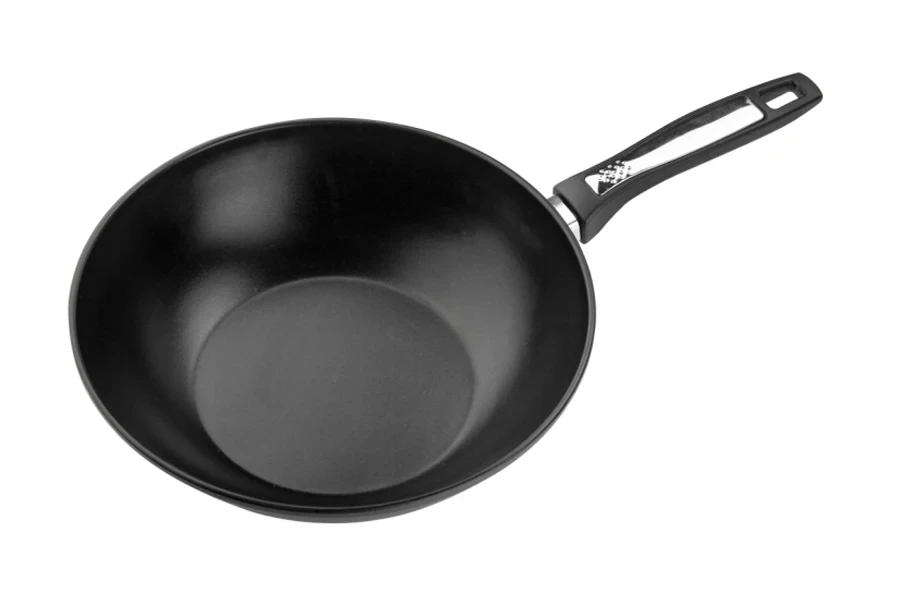
The carbon steel wok market offers a variety of options, each boasting unique features to enhance the cooking experience. Two standout models in this category are the Sur La Table Professional Carbon Steel Wok and the Yosukata Flat Bottom 13.5-inch Pre-Seasoned Blue Carbon Steel Wok.
Sur La Table Professional Carbon Steel Wok
The Sur La Table Professional Carbon Steel Wok distinguishes itself with its functional design and ease of use. Weighing only 4 pounds, it’s one of the lightest in its class, making it highly maneuverable for a range of cooking techniques. The wok’s flat, 5.75-inch-wide bottom provides stability on various cooktops, including gas, electric, and induction. Its smooth, rounded edges prevent food from getting trapped, ensuring even cooking and easy stirring. The wok requires initial seasoning, but this process enhances its non-stick qualities over time. Additionally, the wok features a slim, wooden handle that offers comfortable grip and control, complemented by a contoured wooden helper handle for easier lifting and pouring.
Yosukata Flat Bottom 13.5-inch Pre-Seasoned Blue Carbon Steel Wok
The Yosukata model stands out for its pre-seasoning, which offers a nonstick surface from the outset. This wok features a hand-hammered bowl with a distinctive dark teal hue, achieved through a bluing process that enhances its resistance to rust and corrosion. The wok’s slightly smaller diameter of 13.5 inches and its flat circular base of 6.75 inches ensure stability on most stovetops. Despite being 5 ounces heavier than the Sur La Table model, it still provides a comfortable cooking experience. The wider basin allows for deep-frying larger batches, though it may require more oil. One of the wok’s unique features is its thick handle, which, while offering a firm grip, may require using a towel when hot.
Both models offer distinct advantages for different cooking preferences. The Sur La Table wok is ideal for those who enjoy the process of seasoning and developing a patina over time, while the Yosukata wok appeals to those seeking immediate nonstick functionality and a unique aesthetic. These woks not only cater to different culinary needs but also embody the versatility and efficiency that carbon steel woks are known for.
Advanced cast iron wok designs
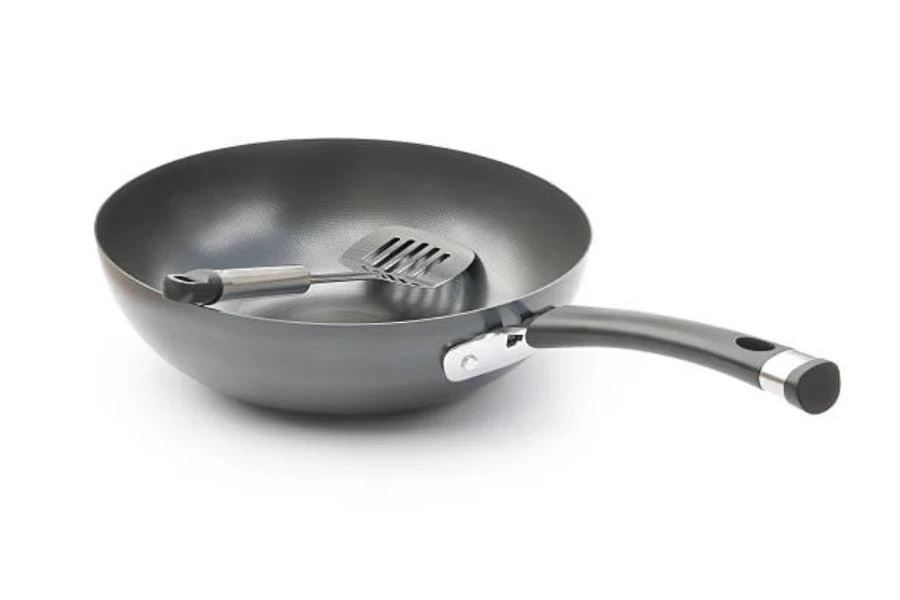
Cast iron woks are renowned for their durability and exceptional heat retention, making them a preferred choice for many culinary applications. Two notable models in this category are the Lodge 14 Inch Cast Iron Wok and the Cuisinart 726-38H Chef’s Classic Stainless 14-Inch Stir-Fry Pan with Helper Handle and Glass Cover.
Lodge 14 Inch Cast Iron Wok
The Lodge 14 Inch Cast Iron Wok is a standout product known for its robust build and consistent cooking performance. Its substantial weight, while making it less suitable for rapid tossing, contributes to its stability and even heat distribution. The wok’s deep, wide bowl design allows for a variety of cooking methods, including stir-frying, deep-frying, and braising. One of the key features of this model is its ability to retain heat for extended periods, ensuring that food remains warm even after cooking. This wok is also noted for its natural nonstick properties, which develop over time with proper seasoning and use. Its heat retention characteristics make it ideal for recipes that require sustained, consistent temperatures.
Cuisinart 726-38H Chef’s Classic Stainless 14-Inch Stir-Fry Pan with Helper Handle and Glass Cover
The Cuisinart 726-38H offers a modern take on the traditional cast iron wok design. It combines the heat retention benefits of cast iron with the added convenience of a glass cover and helper handle. This model is particularly notable for its user-friendly design, which includes a flatter base for stability on various cooktops and a glass lid that allows cooks to monitor their food without losing heat. The helper handle facilitates easy handling and maneuvering, especially when dealing with high volumes of ingredients or heavier dishes. Additionally, the Cuisinart wok’s sleek design and stainless steel accents make it an attractive addition to any kitchen.
Both of these cast iron wok models showcase the versatility and time-tested reliability of cast iron cookware. The Lodge wok is ideal for those who prefer traditional, heavy-duty cookware that can withstand high temperatures and retain heat efficiently. In contrast, the Cuisinart wok caters to users seeking a blend of traditional cooking performance with modern conveniences like a see-through lid and additional handling support. Each model offers a unique set of features tailored to different cooking styles and preferences, highlighting the diverse range of options available in the cast iron wok market.
Cutting-edge stainless steel woks
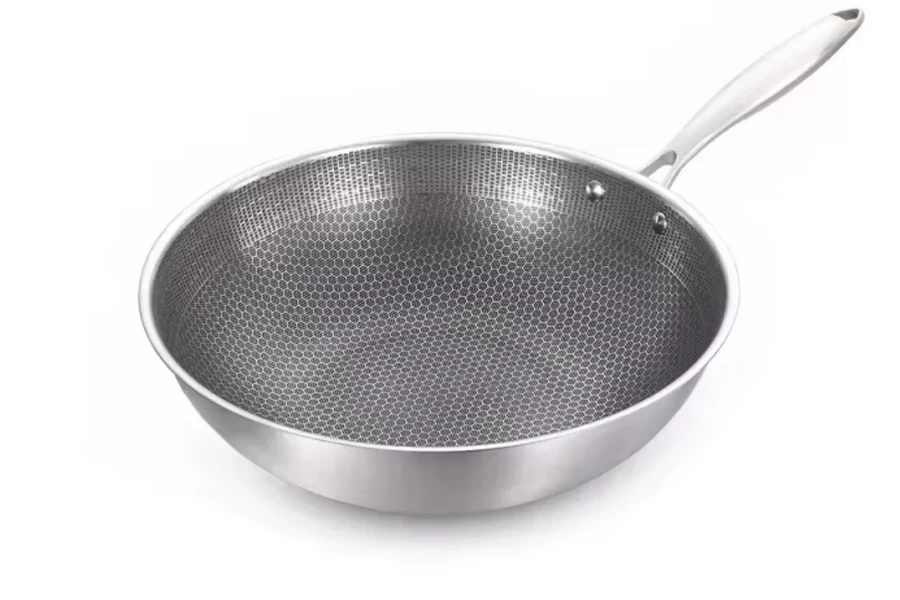
In the realm of stainless steel woks, two models stand out in 2024 for their exceptional quality and design: the Cooks Standard Stainless Steel Multi-Ply Clad Wok and the Cuisinart 726-38H Chef’s Classic Stainless 14-Inch Stir-Fry Pan.
Cooks Standard Stainless Steel Multi-Ply Clad Wok
The Cooks Standard Stainless Steel Multi-Ply Clad Wok emerges as the top choice. It features a flat bottom made from high-quality materials with three layers of metal, offering a lustrous appearance. The multi-ply clad construction includes an aluminum core sandwiched between two layers of 18/10 stainless steel, enhancing both the look and corrosion resistance of the wok. The handles on either side are made of stainless steel and are designed to stay cool during cooking. Available in two sizes (12-inch and 13-inch), this wok offers options for both a steam-vented glass lid and a stainless steel domed lid, depending on the size. The glass lid is oven-safe up to 350°F, while the stainless steel lid can withstand temperatures up to 500°F. Despite its weight, the durability and brand reputation make the Cooks Standard wok a valuable addition to any kitchen.
Cuisinart 726-38H Chef’s Classic Stainless 14-Inch Stir-Fry Pan
The Cuisinart 726-38H offers both affordability and style. This 14-inch flat-bottomed stainless steel wok includes a heavy tempered glass lid without a steam vent, which is remarkably heavier than the wok itself. The lid is designed to prevent dripping and allows for easy monitoring of the cooking process. The base layer of the wok is aluminum, ensuring quick heat absorption, although it’s not compatible with induction stovetops. It features a long, heat-resistant handle, and the entire set is dishwasher safe and oven safe. The wok itself can withstand temperatures up to 550°F, while the lid can handle up to 350°F. The mirror finish of this wok adds to its aesthetic appeal, making it a stylish yet functional choice for the budget-conscious.

Both the Cooks Standard and Cuisinart woks are exemplary in their category, offering high-quality materials, practical designs, and versatility in cooking methods. Whether for steaming, stewing, or braising, these stainless steel woks are capable of accommodating a variety of culinary needs, making them ideal choices for those seeking both performance and elegance in their cookware.
Concluding thoughts
Selecting the right wok in 2024 is a nuanced decision that hinges on understanding material properties, heat distribution, size and weight balance, and compatibility with heat sources. Carbon steel woks excel in quick heating and versatility, cast iron models offer unrivaled heat retention for slower cooking methods, and stainless steel woks provide a modern, low-maintenance option. Each type caters to different culinary techniques and preferences, emphasizing the importance of matching the wok to the specific needs of the kitchen. This knowledge ensures an informed choice, aligning the wok’s capabilities with the culinary aspirations of its user.



